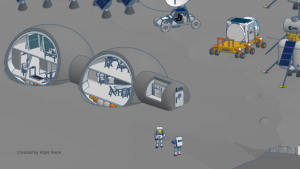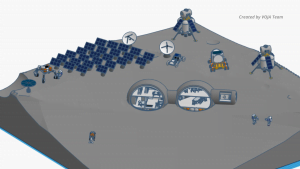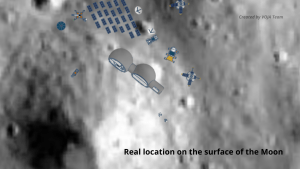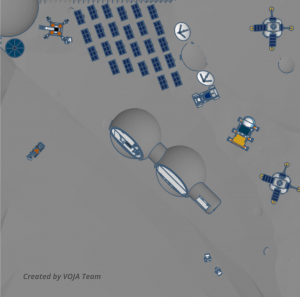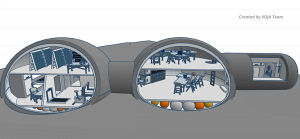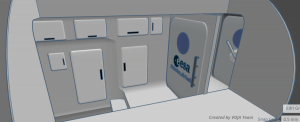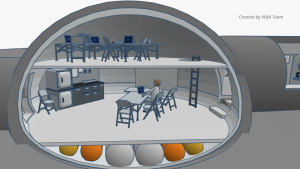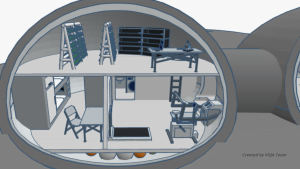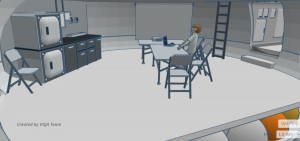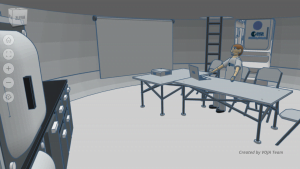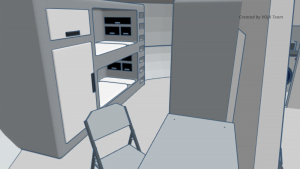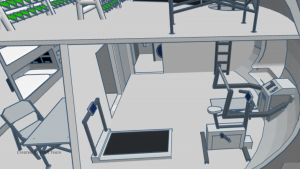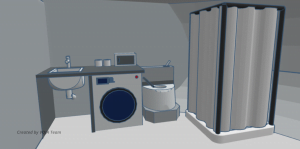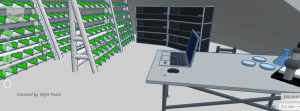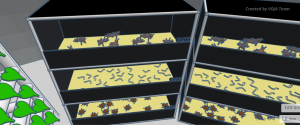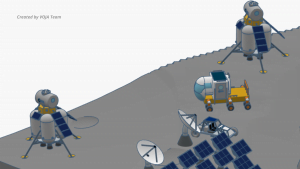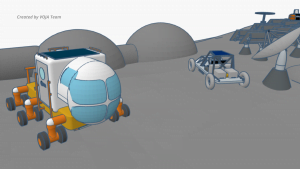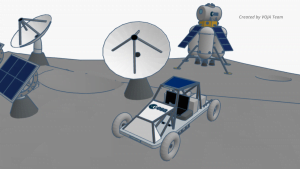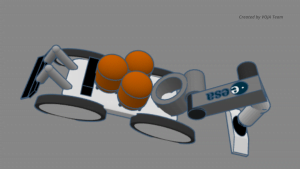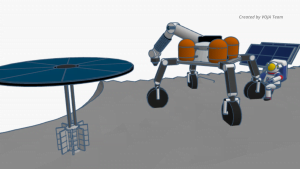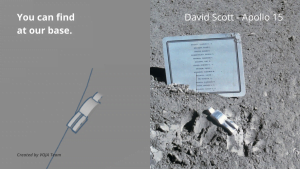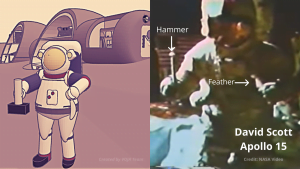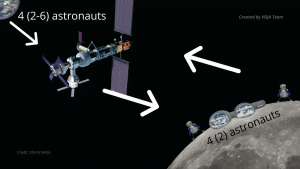Moon Camp Explorers Gallery 2020-2021
In Moon Camp Explorers each team’s mission is to 3D design a complete Moon Camp using Tinkercad. They also have to explain how they will use local resources, protect astronauts from the dangerous of space and describe the living and working facilities.
Team: VOJA Team
ZŠ Roudnice nad Labem Roudnice nad Labem Czech Republic 14 Third Place – ESA Member states
External link for 3d
|
Project description
We tried to apply as realistic approach as we could to our base model so that realization could be done by 2034. In the first years of occupation of our base, we will transport resources from the Earth. There will be experimental testing of usage of local resources for future self-sufficiency of the base (until 2040). We expect to expand our base with additional modules so that the base could accommodate more astronauts. Currently, our base can accommodate 4 astronauts for long-term mission (change every 3 months 2 astronauts). The astronauts will be transported to the Moon using the Orion via Gateway, from where they’ll land on the Moon. We also considered that if our base expanded, it would be possible to import He3 from the Moon, which would be studied on the Earth and it would be a good attraction for investors and greater commercialization of the Moon. Our base will use proven methods and new experimental methods, in the production of oxygen or electricity. We would like to study the behavior of animals and plants in the one-sixth gravity and artificial environment. We also want to test experimental ways of obtaining substances necessary for life that could be used during the expeditions to Mars. |
|||
|
Where do you want to build your Moon Camp?
Close to the Lunar Poles Why did you choose this location?
We decided to build our base in the southern hemisphere, more precisely a few kilometers from the Drygalski crater (Lat-76.82449, Lot-94.97475). We chose this place for several reasons. There are smaller temperature fluctuations at the poles of the Moon (-60°C- 0°C) thus lower power consumption would be required to control the temperature at the base. We also chose this place from data of the LRO satellite,because there is water and in our opinion it could be geologically interesting. Since the base is not located inside the crater or near the mountains, our solar farm could operate all the time. How do you plan to build your Moon Camp? Which materials would you use?
We would build our base from inflatable modules that would be covered by lunar soil with the urine of astronauts. We want to mix astronauts urine into lunar concrete for better material properties. It will be initially brought from Gateway. Robots will cover the inflatable modules with regolit and make the bases of solar panels and the communication parabola. The cables from the solar panels and the communication parabolas will be buried under a thin layer of regolith by our small excavator. The base is designed to protect astronauts from the inhospitable conditions (temperature fluctuations, cosmic and solar radiation, micrometeorites). Explain how your Moon Camp will provide the astronauts with:
|
|||
|
Water
|
Food
|
Electricity
|
Air
|
|
In the early stages of the base, we will have to import water. If experiments show that water can be obtained from the extraction of lunar ice, which is located in the regolith at the poles of the Moon, we would try for self-sufficiency. We placed our base in a strategic location on the Moon where water is located (LRO data). We would also try to create a closed water cycle system at our base, so we would take water from the waste liquids of astronauts and recycle it again (efficiently up to 96%). |
We will get food for astronauts from an aeroponic farm where we will grow legumes, soybeans, algae, radishes, salads and other fruits and vegetables. Also we would like to breed insects (crickets, mealworms, cockroaches) for several reasons: Insects are relatively easy to place and breed. Another advantage is simple transport from the Earth and a few individuals could reproduce relatively quickly into a larger colony. Insects would be a good source of calcium, iron, omega 3, protein, fiber, amino acids, vitamin A C D E and B vitamins. Part of the food would be imported from the beginning. |
The largest source of electricity will be solar panels (up to 90%). We will expand the solar panels to larger numbers, placed on 360 ° rotating bases to have access to the sun, except for the times in the shade (distance 400 km from the pole), in order to eliminate the risk of failure of several of them. We’ll store electricity in high-capacity batteries, which we’ll use as a backup source of energy during the moonlit night or outages. Experimental and backup source using the Radioisotope-Thermoelectric-Generator. We’ll try to make rocket fuel from water on the principle of electrolysis. |
In the early stages, we’ll import a breathable atmosphere, but later we want to produce it for astronauts on the basis of several gases. Oxygen would be obtained by electrolysis of water. As an experimental source of oxygen, we would use the GaLORE project (Gaseous Lunar Oxygen from Regolith Electrolysis), which obtains oxygen from metal oxides contained in regolith, but we would take this type of oxygen production as a backup and experimental due to high energy consumption and scarcity. The remaining metal would be used for processing on a 3D printer. We’ll import nitrogen. |
|
Describe a day on the Moon for one of your Moon Camp astronauts
The base will follow UTC. wake up at 6.00 Three times a week, astronauts will ascend to EVA in the experimental sections. Mostly they would take place in the afternoon, with one astronaut always staying at the base Crew changes would take place by two members with a Gateway crew. At Gateway, there would be 4 members of two crews, while there would be another 4 members at Moon Base. They would change with two astronauts every 3 months. The astronauts at our base would be scientists from various fields. We would have a doctor or biologist to study bodily and animal in one-sixth gravity. There will be materials engineers who will test new procedures or repair the base. The crew will also include a geologist who would study the surface of the Moon. Geologists would spend the most time with engineers on the surface. Physicists and chemists would be in the operation of various experiments. We would try to have multidisciplinary astronauts. |
|||



